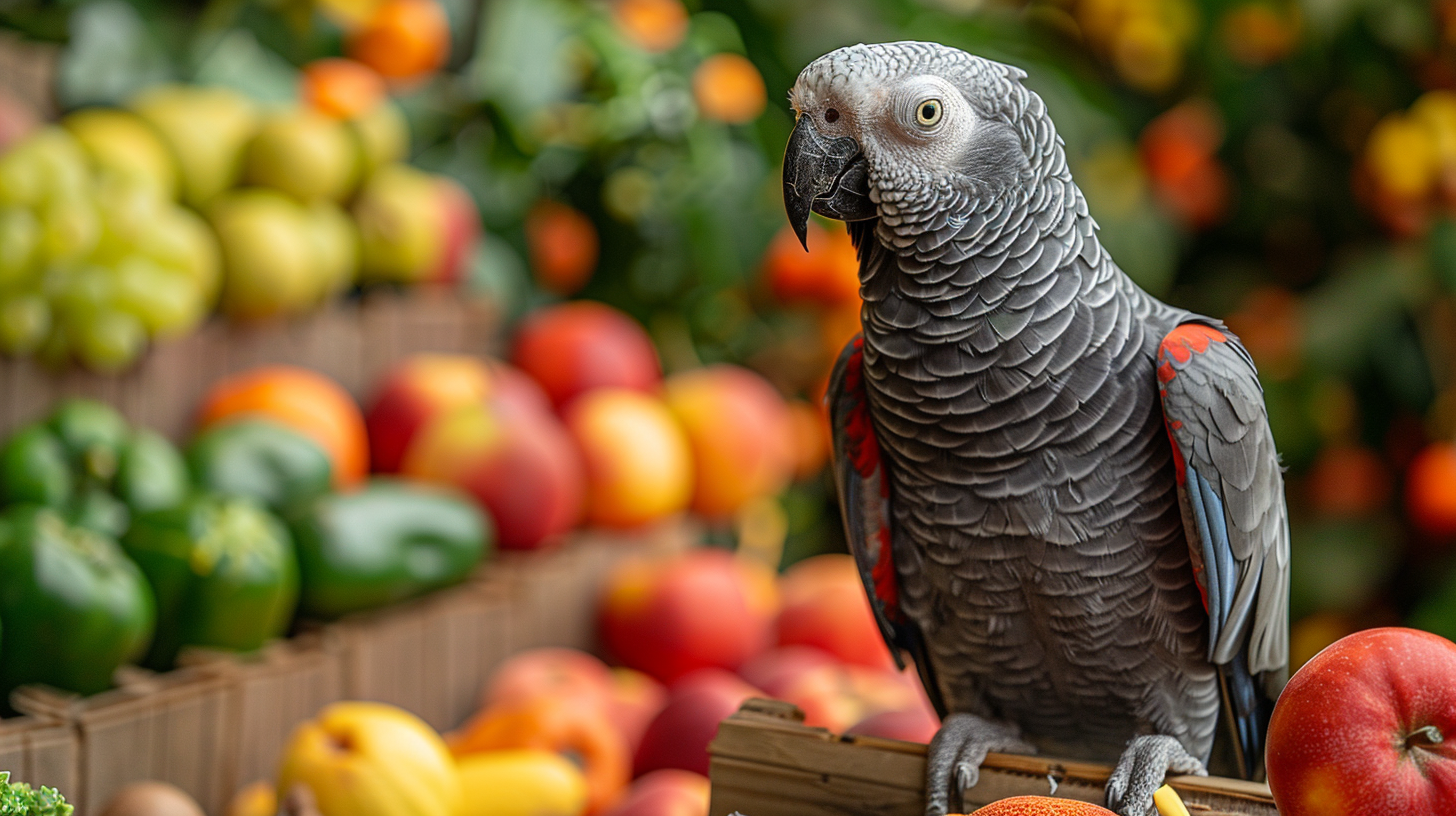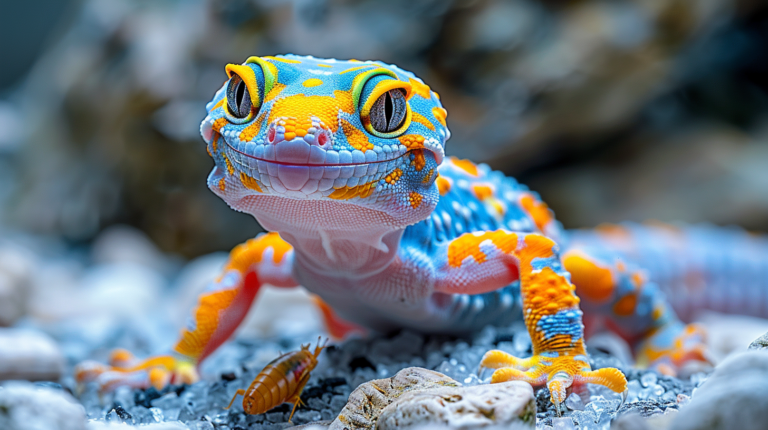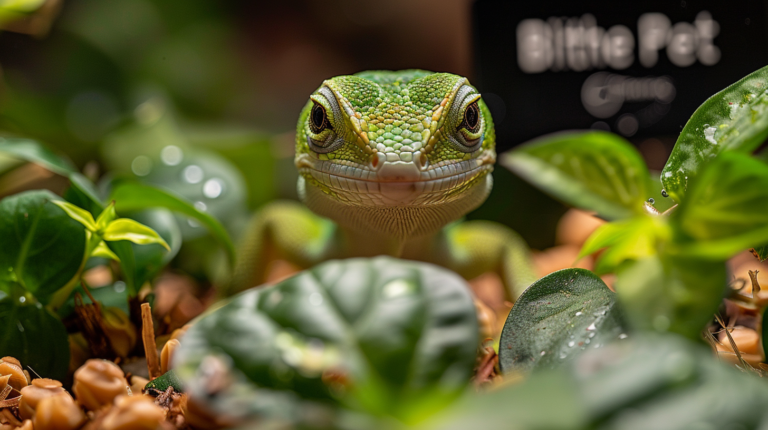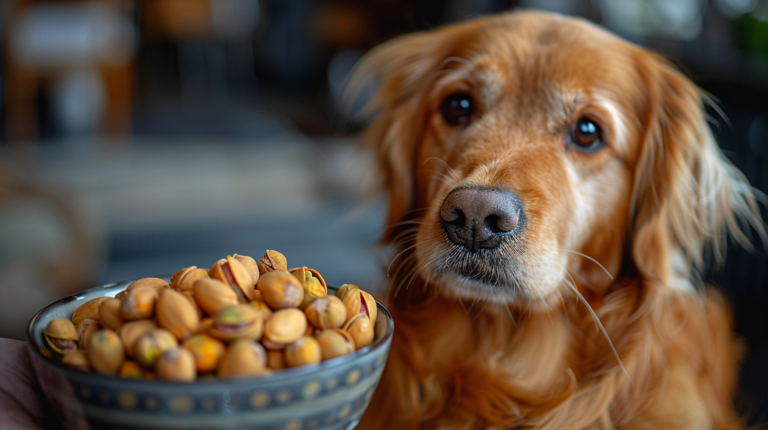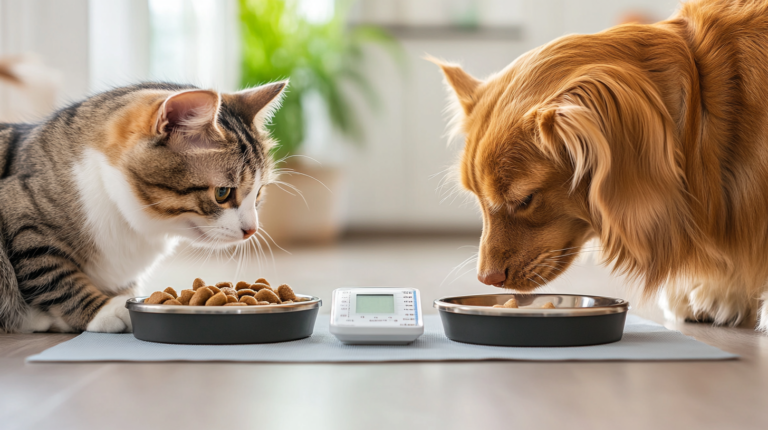Discover 6 categories of safe bird snacks your feathered friend will love! From nutritious berries to crunchy vegetables, learn how to safely treat your pet bird with our vet-approved guide.
Table of Contents
Introduction: Treating Your Feathered Friends Right
Whether you’re a seasoned bird owner or have recently welcomed a feathered friend into your home, providing a nutritionally balanced diet is essential for your pet’s health and happiness. While commercial bird feed forms the foundation of your bird’s diet, safe bird snacks in the form of fresh fruits and vegetables add vital nutrients, mental stimulation, and enjoyment to your avian companion’s life.
Birds in the wild consume a diverse diet that includes seeds, fruits, insects, and vegetation. Replicating this variety in captivity helps prevent nutritional deficiencies and boredom. However, not all human foods are safe for our avian friends, and some popular household fruits and vegetables can be toxic to birds. Understanding which snacks are safe—and in what quantities—is crucial for responsible bird ownership.
In this comprehensive guide, we’ll explore six categories of safe bird snacks that your feathered friend will love, covering nutritional benefits, preparation tips, and serving suggestions. We’ll also address common questions about bird nutrition and provide expert advice to help you make informed decisions about treating your pet bird.
Why Supplement Your Bird’s Diet with Fresh Snacks?
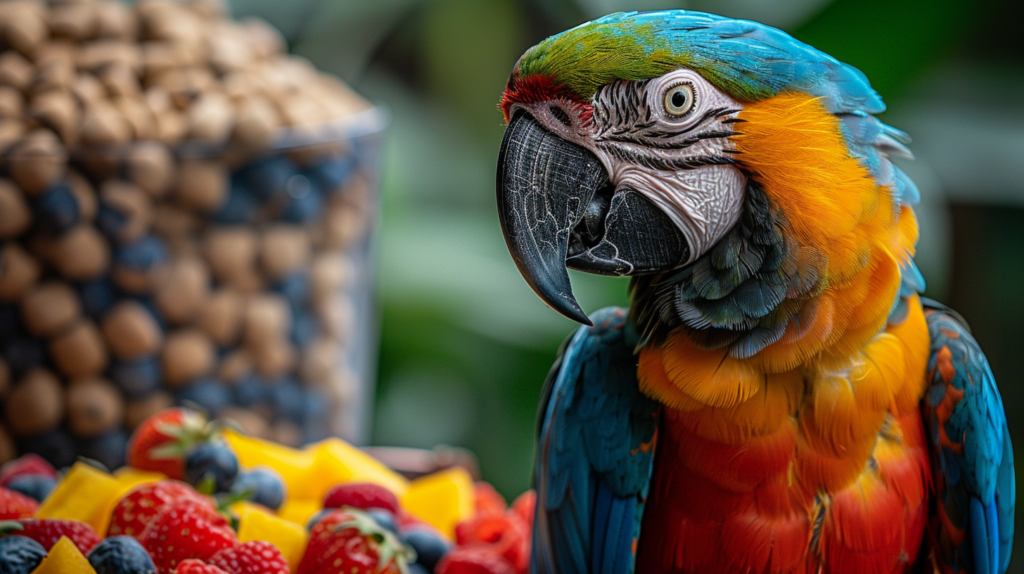
Before diving into our list of safe bird snacks, let’s understand why fresh fruits and vegetables are important additions to your bird’s diet.
Nutritional Benefits
Commercial bird pellets and seeds are formulated to provide essential nutrients, but they don’t offer the full spectrum of vitamins, minerals, antioxidants, and phytochemicals found in fresh produce. According to avian veterinarian Dr. Laurie Hess, “Fresh fruits and vegetables can provide up to 30% of a pet bird’s diet, offering vital nutrients that support immune function, feather health, and overall vitality.”
Research published in the Journal of Avian Medicine and Surgery indicates that birds with access to a variety of fresh produce show improved feather quality, better immune responses, and reduced behavioral issues compared to those on seed-only diets.
Behavioral Enrichment
In their natural habitats, birds spend hours foraging for food. Offering fresh snacks in creative ways can stimulate this natural behavior, providing mental enrichment and preventing boredom-related behaviors like feather plucking.
Hydration Support
Many fruits and vegetables have high water content, helping to keep your bird hydrated, especially during warmer months or for species that don’t drink much water directly.
Training Opportunities
Fresh treats make excellent training rewards, allowing you to teach your bird new behaviors or reinforce positive ones while providing nutritional benefits.
Now, let’s explore six categories of safe bird snacks that can enhance your feathered friend’s diet and quality of life.
1. Berries: Nature’s Perfect Bird Snacks
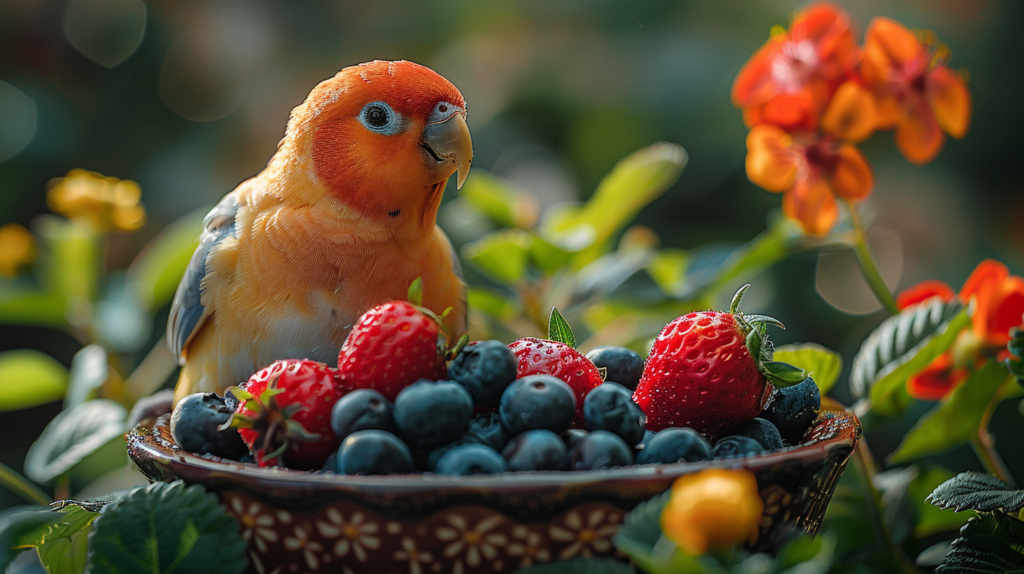
Berries are among the most nutritionally dense safe bird snacks available, packed with antioxidants, vitamins, and natural sugars that birds find irresistible.
Blueberries
Often called a “superfood,” blueberries are packed with antioxidants that support your bird’s immune system. Their small size makes them perfect for birds of all sizes, from finches to macaws.
Nutritional highlights:
- High in vitamin C and vitamin K
- Rich in manganese
- Contains anthocyanins with anti-inflammatory properties
Serving suggestion: Offer fresh, washed blueberries whole to larger birds or sliced in half for smaller species. Many bird owners report that slightly warmed blueberries (to room temperature) are especially enticing to picky eaters.
Strawberries
These juicy berries are another excellent safe bird snack, offering natural sweetness and essential nutrients.
Nutritional highlights:
- Excellent source of vitamin C
- Contains folate and potassium
- High in fiber
Serving suggestion: Remove the leafy top and slice into appropriately sized pieces for your bird. Some birds enjoy pecking at half a strawberry secured to the side of their cage.
Raspberries and Blackberries
These textured berries provide sensory enrichment along with nutrition.
Nutritional highlights:
- Rich in fiber
- High in vitamin C and manganese
- Contains ellagic acid, which has antioxidant properties
Serving suggestion: Offer whole to larger birds or broken into pieces for smaller species. The natural “cup” shape of raspberries can be used to hold smaller seeds as a foraging opportunity.
Important note: While berries are excellent safe bird snacks, they should be thoroughly washed to remove pesticide residues. Whenever possible, choose organic berries for your feathered friend.
2. Crisp and Hydrating: Safe Fruit Snacks for Birds
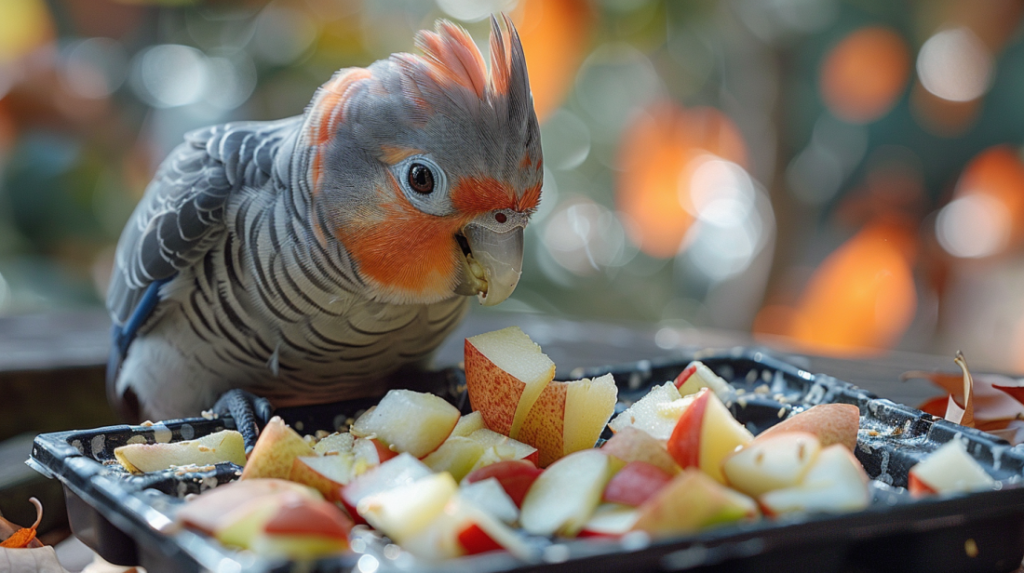
Beyond berries, many common fruits make excellent safe bird snacks, providing hydration and essential nutrients.
Apples
A favorite among many bird species, apples provide a satisfying crunch and valuable nutrients.
Nutritional highlights:
- Good source of fiber
- Contains vitamins A and C
- Provides natural sugars for energy
Serving suggestion: Always remove seeds and core, as apple seeds contain trace amounts of cyanide. Slice into thin wedges or small cubes depending on your bird’s size. Many birds enjoy apple pieces hung from a skewer or cage clip.
Case study: A 2021 survey of 500 parrot owners by the Avian Wellness Foundation found that apples ranked as the most frequently offered fruit treat, with 78% of respondents reporting that their birds eagerly accepted apple snacks.
Pears
Similar to apples but with a softer texture, pears are well-received by many birds.
Nutritional highlights:
- High in fiber
- Contains vitamin C and copper
- Good source of antioxidants
Serving suggestion: Remove seeds and core. The slightly grainy texture of pears makes them particularly appealing to birds that enjoy tactile foraging experiences.
Melons (Watermelon, Cantaloupe, Honeydew)
Melons are exceptionally hydrating and packed with nutrients, making them excellent safe bird snacks during warmer months.
Nutritional highlights:
- Very high water content (watermelon is 92% water)
- Rich in vitamins A and C
- Contains lycopene (in watermelon), a powerful antioxidant
Serving suggestion: Remove all seeds and rind. Cut into appropriately sized chunks or spears that your bird can hold. Many birds enjoy pecking the flesh directly from a secured melon wedge.
Grapes
These juicy fruits are beloved by many bird species and make convenient safe bird snacks.
Nutritional highlights:
- Contains resveratrol, an antioxidant
- Good source of vitamins K and C
- Provides natural sugars for energy
Serving suggestion: Always slice grapes in half to prevent choking, especially for smaller birds. Remove any seeds from seeded varieties. Some bird owners freeze grape halves for a refreshing summer treat.
Feeding tip: While fruits are healthy safe bird snacks, they should typically constitute no more than 10-15% of your bird’s overall diet due to their sugar content. According to avian nutritionist Dr. Jason Crean, “Think of fruits as nature’s candy for birds—nutritious in moderation but not as a dietary staple.”
3. Leafy Greens: Nutritional Powerhouses
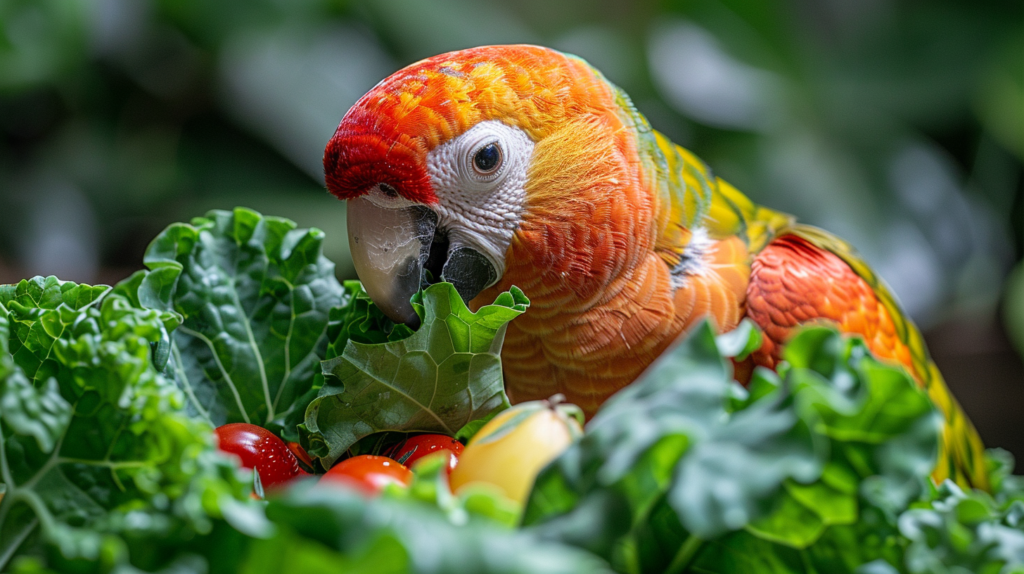
Leafy greens are among the most nutritionally dense safe bird snacks and should be regularly offered to your feathered friend.
Kale
This nutritional powerhouse has gained popularity in human health food circles, and with good reason—it’s equally beneficial for birds.
Nutritional highlights:
- Exceptional source of vitamins A, K, and C
- Contains calcium for bone health
- Rich in antioxidants
Serving suggestion: Remove thick stems and tear into manageable pieces. Many birds enjoy kale leaves attached to the side of their cage, which encourages natural foraging behavior.
Spinach
Another nutritional superstar, spinach makes an excellent safe bird snack when offered in moderation.
Nutritional highlights:
- High in iron and folate
- Good source of vitamins A and K
- Contains antioxidants
Serving suggestion: Offer fresh, washed spinach leaves whole or torn into pieces. Some birds prefer baby spinach for its milder flavor and tender texture.
Important note: While spinach is nutritious, it contains oxalates that can bind to calcium and limit its absorption. For this reason, spinach should be offered in moderation and rotated with other leafy greens.
Romaine Lettuce
A milder option that’s well-accepted by many birds, romaine provides hydration along with nutrients.
Nutritional highlights:
- High water content
- Contains vitamins A and K
- Lower in oxalates than spinach
Serving suggestion: Offer the crisp, central rib of romaine leaves as a crunchy treat, or tear the leafy portions into appropriate sizes.
Swiss Chard
With its colorful stems and nutrient-rich leaves, Swiss chard is both visually appealing and nutritious.
Nutritional highlights:
- Excellent source of vitamins A, C, and K
- Contains magnesium and potassium
- Provides antioxidants
Serving suggestion: Remove tough stems and chop leaves into manageable pieces. The bright stems can be offered separately to birds that enjoy crunchier textures.
Expert insight: According to Dr. Brian Speer, avian veterinarian and author of “Birds for Dummies,Leafy greens should make up the majority of fresh produce offered to pet birds, particularly for species like conures and macaws that consume more vegetation in the wild.
4. Root Vegetables: Crunchy Bird Treats
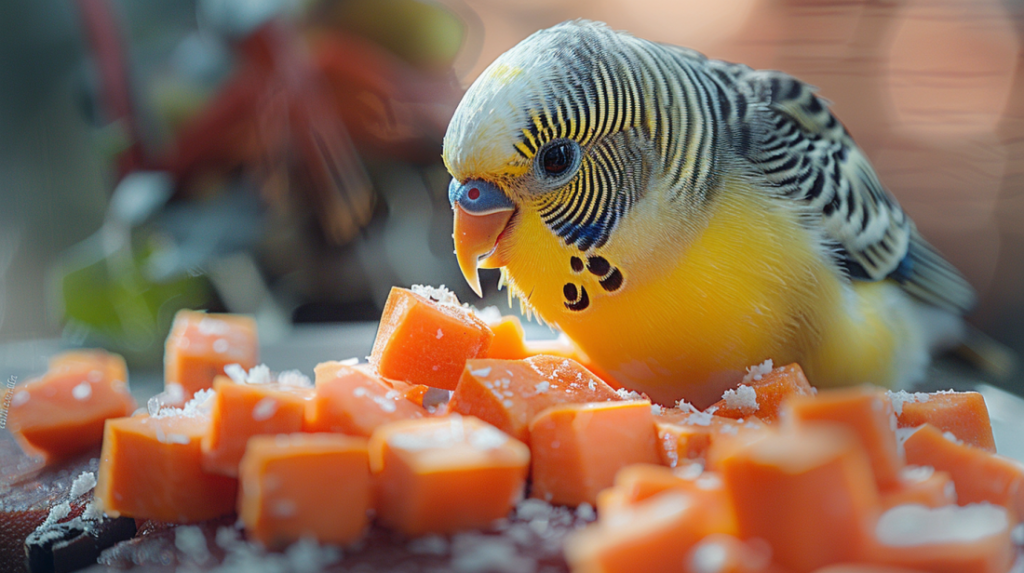
Root vegetables provide satisfying crunch along with important nutrients, making them excellent safe bird snacks.
Carrots
These vibrant orange vegetables are a favorite among many bird species.
Nutritional highlights:
- Exceptional source of beta-carotene (vitamin A precursor)
- Contains fiber and vitamin K
- Provides satisfying crunch
Serving suggestion: Offer raw carrots grated, in thin sticks, or in small cubes depending on your bird’s size. Many birds enjoy whole baby carrots to gnaw on, which supports beak health. The leafy carrot tops can also be offered as an additional treat.
Sweet Potatoes
These nutritional powerhouses make excellent safe bird snacks when properly prepared.
Nutritional highlights:
- Rich in beta-carotene
- Good source of vitamins C and B6
- Contains potassium and manganese
Serving suggestion: Sweet potatoes should be cooked (baked or steamed without additives) before serving to improve digestibility. Cool completely before offering small pieces to your bird.
Research note: A study published in the Journal of Avian Medicine found that birds receiving beta-carotene-rich vegetables like sweet potatoes and carrots showed improved feather coloration and condition compared to control groups.
Beets
With their striking color and sweet flavor, beets can be an appealing safe bird snack.
Nutritional highlights:
- Contains unique antioxidants called betalains
- Good source of folate and manganese
- Provides natural sugars for energy
Serving suggestion: Offer raw beets grated or in small pieces. Some birds prefer cooked beets for their softer texture and sweeter flavor. Be aware that beet juice can stain cage materials and feathers, though this is harmless.
Radishes
These peppery vegetables provide variety in your bird’s snack rotation.
Nutritional highlights:
- Contains vitamin C
- Low in calories
- Provides isothiocyanates, compounds with potential health benefits
Serving suggestion: Slice into thin discs or small pieces. The mild heat of radishes is often appreciated by larger parrot species that enjoy flavor variety.
Feeding tip from experienced bird keeper Maria Gonzalez: “Root vegetables can be served in creative ways to extend foraging time. Try embedding small pieces in a paper towel roll or weaving carrot sticks through cage bars to encourage problem-solving while snacking.”
5. Bell Peppers and Squash Varieties
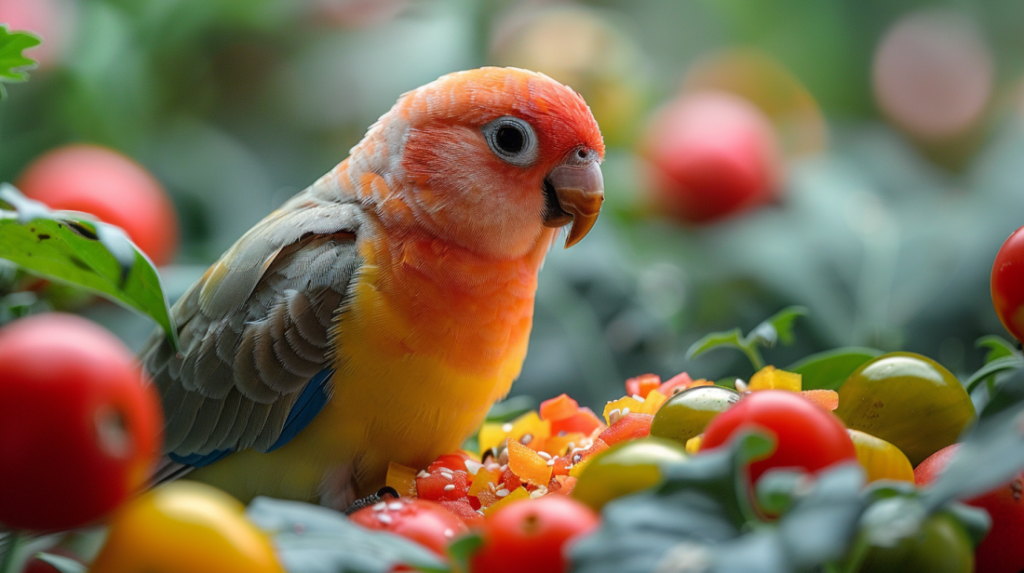
Colorful bell peppers and various squash types provide visual appeal and excellent nutrition as safe bird snacks.
Bell Peppers
Available in green, red, yellow, and orange varieties, bell peppers are nutritional powerhouses that many birds enjoy.
Nutritional highlights:
- Exceptional source of vitamin C (red bell peppers contain more than oranges)
- Good source of vitamins A and B6
- Contains beneficial carotenoids
Serving suggestion: Remove seeds and white pith. Cut into strips or chunks appropriate for your bird’s size. Many birds enjoy bell pepper pieces hung from skewers or cage clips. Red and yellow peppers tend to be sweeter and more readily accepted than green varieties.

Zucchini and Summer Squash
These mild-flavored squashes make excellent safe bird snacks, especially for birds that are hesitant to try stronger-flavored vegetables.
Nutritional highlights:
- High water content for hydration
- Contains vitamin C and potassium
- Low in calories
Serving suggestion: Offer raw in thin slices or small cubes. Some birds enjoy the seeds and soft center portion especially.
Butternut and Acorn Squash
These winter squashes provide dense nutrition and natural sweetness.
Nutritional highlights:
- Rich in beta-carotene
- Good source of vitamin C
- Contains potassium and magnesium
Serving suggestion: These harder squashes should be cooked (steamed or baked without additives) and cooled before serving in small pieces. The natural sweetness makes them appealing to many birds.
Statistical insight: According to the Association of Avian Veterinarians, approximately 42% of nutritional deficiencies seen in captive birds could be prevented through regular offering of colorful vegetables like bell peppers and squash.
6. Herbs and Sprouts: Micronutrient-Rich Bird Snacks
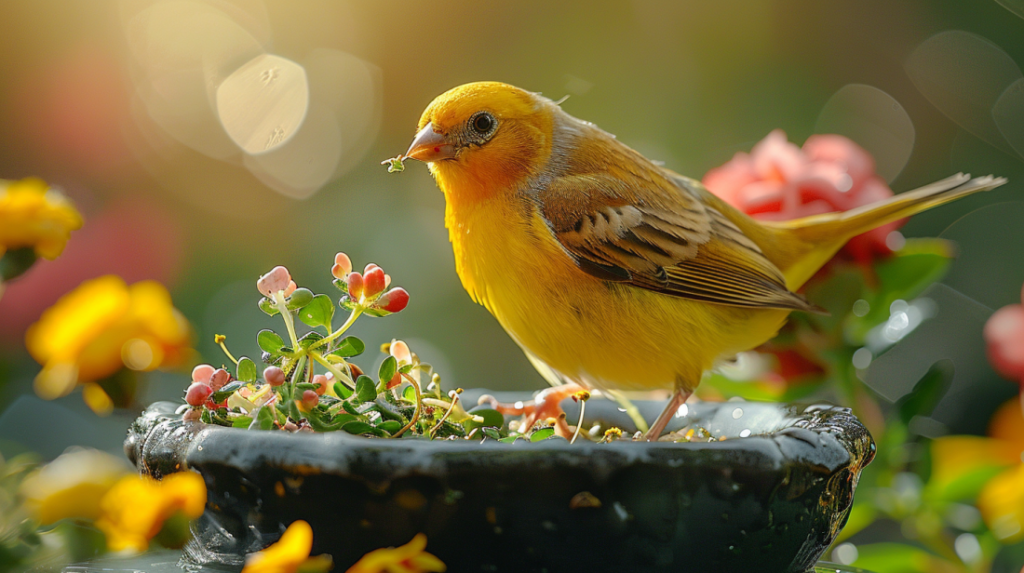
Fresh herbs and sprouted seeds provide concentrated nutrition in small packages, making them excellent safe bird snacks.
Fresh Herbs
Many common culinary herbs are not only safe for birds but offer health benefits.
Safe herbs include:
- Basil
- Cilantro
- Parsley
- Mint
- Dill
- Thyme
Nutritional highlights:
- Rich in essential oils with various health properties
- Concentrated source of vitamins and minerals
- Contains antioxidants
Serving suggestion: Offer fresh, washed herb sprigs attached to the cage or mixed with other vegetables. Many birds enjoy stripping the leaves from stems, which provides enrichment along with nutrition.
Sprouts
Sprouted seeds undergo a transformation that increases their nutritional value, making them exceptional safe bird snacks.
Suitable sprouting options:
- Alfalfa
- Mung beans
- Lentils
- Broccoli seeds
- Sunflower seeds (hulled)
Nutritional highlights:
- Higher in enzymes and protein than unsprouted seeds
- Contains increased levels of vitamins
- Easy to digest
Serving suggestion: Rinse thoroughly and offer when sprouts are young (1/4 to 1/2 inch long). Ensure sprouts are fresh and free from mold or unusual odors.
Expert advice: Dr. Scott Echols, avian veterinarian and researcher, notes, “Sprouted seeds represent one of the most nutritionally complete foods we can offer our birds. The sprouting process transforms dormant seeds into living plants with dramatically different nutritional profiles.”
Safety Guidelines for Offering Snacks to Your Bird
While the items listed above are safe bird snacks, proper preparation and serving methods are crucial for your pet’s health and safety.
Preparation Best Practices
- Wash thoroughly: All fruits and vegetables should be washed under running water to remove pesticide residues, even if organic.
- Appropriate sizing: Cut foods into pieces suitable for your bird’s size to prevent choking hazards.
- Remove harmful parts: Always remove seeds from apples, pears, and stone fruits, as well as pits from cherries and other fruits.
- Serve at room temperature: Cold foods directly from the refrigerator can shock your bird’s digestive system. Allow produce to reach room temperature before serving.
- Fresh is best: Offer fresh snacks rather than canned, dried, or processed versions, which may contain added salt, sugar, or preservatives.
Serving Suggestions
- Rotation is key: Offer a rotating variety of safe bird snacks to ensure a broad spectrum of nutrients.
- Remove uneaten portions: Fresh produce should be removed from your bird’s cage after 2-4 hours to prevent bacterial growth.
- Start small: When introducing new foods, offer small amounts alongside familiar favorites.
- Morning offerings: Many bird experts recommend offering fresh foods in the morning when birds are naturally most hungry and active.
- Creative presentation: Use bird-safe skewers, puzzle toys, or foraging devices to make snack time more engaging and extend the mental enrichment benefits.
Foods to Avoid: What Not to Feed Your Bird
Understanding which foods are unsafe is just as important as knowing which safe bird snacks to offer. The following items should never be given to your feathered friend:
Toxic Foods for Birds
- Avocado: Contains persin, which can be fatal to birds even in small amounts
- Chocolate: Contains theobromine, toxic to birds as well as many other pets
- Caffeine: Found in coffee, tea, and some sodas
- Alcohol: Toxic even in very small amounts
- Onions and garlic: Can cause digestive upset and hemolytic anemia
- Mushrooms: Many varieties are toxic to birds
- Fruit seeds and pits: Apple seeds, cherry pits, and others contain small amounts of cyanide
- Salt and high-sodium foods: Can lead to electrolyte imbalances and kidney dysfunction
- Xylitol and artificial sweeteners: Can cause liver damage and hypoglycemia
Foods to Limit
While not toxic, these foods should be limited in your bird’s diet:
- High-fat foods: Seeds should be offered in moderation
- High-sugar fruits: Limit very sweet fruits like grapes and bananas
- Dairy products: Birds lack the enzymes to properly digest lactose
Veterinary perspective: According to the Exotic Animal Medicine Center, approximately 15% of emergency avian visits relate to ingestion of toxic foods, highlighting the importance of education about safe bird snacks.
The 80/20 Rule: Balancing Your Bird’s Diet
While safe bird snacks are important for nutrition and enrichment, they should be part of a balanced diet. Many avian nutritionists recommend the “80/20 rule”:
- 80% high-quality commercial diet: Species-appropriate pellets or formulated diet
- 20% fresh foods: Including the safe bird snacks discussed in this article
This ratio may vary slightly based on species, with some birds like lories and lorikeets requiring more fresh foods in their diet.
Creating a Feeding Schedule for Your Bird
Establishing a regular feeding schedule helps ensure your bird receives proper nutrition while allowing you to monitor food intake.
Sample Daily Feeding Schedule
| Time | Food Type | Notes |
| Morning (7-8 AM) | Fresh vegetables and leafy greens | Birds are typically most hungry in the morning |
| Mid-morning (10-11 AM) | Pellets/formulated diet | Main nutritional source |
| Afternoon (2-3 PM) | Fruits and other safe bird snacks | Limit sweet fruits |
| Evening (5-6 PM) | Pellets/formulated diet | Evening meal |
| Occasional | Seeds and nuts | As training rewards or occasional treats |
Adjust amounts based on your bird’s size, species, and activity level. Always ensure fresh water is available.
Transitioning a Picky Eater to Healthy Snacks
If your bird is reluctant to try new foods, don’t despair. Many birds, especially those previously on seed-only diets, require patience and persistence when introducing safe bird snacks.
Strategies for Success
- Lead by example: Birds are social eaters. Pretend to eat the food yourself (or actually enjoy some if it’s human-appropriate) while making appreciative sounds.
- Mix with favorites: Chop new foods finely and mix with known favorites, gradually increasing the proportion of new foods.
- Peer pressure works: If possible, let your bird observe other birds eating the new foods.
- Timing matters: Offer new foods when your bird is hungriest, typically in the morning.
- Texture variations: Some birds prefer certain textures. Try offering the same vegetable raw and cooked, or in different cuts, to discover preferences.
- Warm (not hot) foods: Slightly warming foods to room temperature can release aromas that make them more appealing.
- Persistence pays off: Research suggests it may take 15-20 exposures before a bird accepts a new food. Don’t give up too quickly!
Success story: “My Amazon parrot refused anything but seeds for years,” shares bird enthusiast Thomas Reynolds. “I started by finely chopping kale and sprinkling it on his seed mix. After three months of daily offerings and gradual increases, he now eagerly accepts kale, carrots, and bell peppers directly from my hand.”
Seasonal Variations in Bird Snacks
Offering seasonal produce provides nutritional variety and keeps snack time interesting for your feathered friend.
Seasonal Safe Bird Snacks
Spring:
- Fresh herbs
- Strawberries
- Tender greens
- Sprouts
Summer:
- Berries
- Melons
- Zucchini
- Bell peppers
Fall:
- Apples
- Pears
- Butternut squash
- Sweet potatoes
Winter:
- Root vegetables
- Citrus (in moderation)
- Kale
- Stored squashes
Seasonal rotation not only provides nutritional variety but may also more closely mimic the natural dietary changes wild birds would experience.
Feeding by Species: Special Considerations
Different bird species have evolved to eat different diets in the wild, and these natural tendencies should inform your choice of safe bird snacks.
Species-Specific Recommendations
Budgies and Cockatiels:
- Focus on leafy greens, small berries, and finely chopped vegetables
- May prefer millet as a training treat over fruits
Conures and Quakers:
- Generally adventurous eaters who enjoy a wide variety of fruits and vegetables
- Often appreciate spicy flavors more than other species
African Greys and Amazons:
- Benefit particularly from orange and red vegetables rich in carotenoids
- May need more consistent exposure to accept new foods
Macaws:
- Require higher fat content; can have more nuts as treats
- Often enjoy crunching through whole raw vegetables
Lories and Lorikeets:
- Specialized brush tongues designed for nectar and soft fruits
- May need more fruit in their diet than other species
Finches and Canaries:
- Require finely chopped vegetables and soft fruits
- Benefit from sprouted seeds as safe bird snacks
DIY Bird Snack Ideas
Create these simple homemade safe bird snacks to add variety to your feathered friend’s diet:
Birdie Salad
Ingredients:
- 1 cup finely chopped leafy greens (kale, romaine, spinach)
- ¼ cup grated carrot
- ¼ cup diced bell pepper
- 2 tablespoons diced apple
- 1 tablespoon chopped fresh herbs
Preparation: Toss ingredients together and serve fresh. Store unused portion in refrigerator for up to 2 days.
Frozen Foraging Cups
Ingredients:
- Assorted diced safe bird snacks (berries, melons, bell peppers)
- Water or unsweetened coconut water
Preparation: Place diced fruits and vegetables in an ice cube tray, fill with liquid, and freeze. Offer as a refreshing treat on hot days.
Veggie Skewers
Ingredients:
- Bell pepper strips
- Zucchini slices
- Carrot sticks
- Leafy greens
Preparation: Thread vegetables onto a bird-safe skewer and hang in the cage for interactive feeding.
For More Expert Pet Care Tips and Product Recommendations, Visit BlithePet.com — Your Trusted Source for Pet Wellness.
FAQs
Q: How often should I give my bird fresh fruits and vegetables?
A: Most avian veterinarians recommend offering fresh safe bird snacks daily. Leafy greens can be offered daily, while fruits should be limited to a few times per week due to their sugar content.
Q: Do I need to remove the skin from fruits and vegetables before feeding them to my bird?
A: In most cases, thoroughly washed organic produce can be offered with the skin intact, which often contains additional nutrients. However, produce with thick or waxy skins (like cucumbers treated with wax) should be peeled or organic options chosen.
Q: My bird won’t try new foods. What should I do?
A: Patience is key. Continue offering small amounts of fresh foods daily, even if rejected. Try different presentations, textures, and temperatures. Some birds are more likely to try foods that they see their owners “eating” first.
Q: Can birds eat citrus fruits?
A: Most birds can consume small amounts of citrus fruits, which are rich in vitamin C. However, citrus should be offered in moderation due to its acidity.
Q: Are dried fruits suitable safe bird snacks?
A: While not toxic, dried fruits contain concentrated sugars and should be offered very sparingly, if at all. Fresh fruits provide better nutrition and hydration.
Q: How can I tell if my bird is getting enough nutrients from snacks and regular food?
A: Signs of good nutrition include bright eyes, smooth feathers, proper weight, and energetic behavior. Regular veterinary check-ups should include assessment of your bird’s diet and nutritional status.
Conclusion:
Nourishing Your Bird With Care
Providing safe bird snacks in the form of fresh fruits and vegetables is one of the most important ways you can support your feathered friend’s health and happiness. Not only do these foods supply essential nutrients that might be missing from commercial diets, but they also offer crucial mental stimulation and enrichment.
Remember that introducing new foods requires patience and persistence. While some birds eagerly accept novel items, others may need repeated exposure before they’re willing to try something new. Don’t be discouraged if progress seems slow—the health benefits are well worth the effort.
By rotating through the six categories of safe bird snacks we’ve discussed—berries, fruits, leafy greens, root vegetables, bell peppers and squash, and herbs and sprouts—you’ll ensure your bird receives a wide spectrum of nutrients while keeping mealtime interesting and engaging.
Above all, observe your individual bird’s preferences and needs. Each bird has unique tastes and nutritional requirements based on species, age, activity level, and health status. Working with an avian veterinarian to develop a customized nutrition plan is always recommended.
Have a similar experience with your pet bird? Share it in the comments below!

